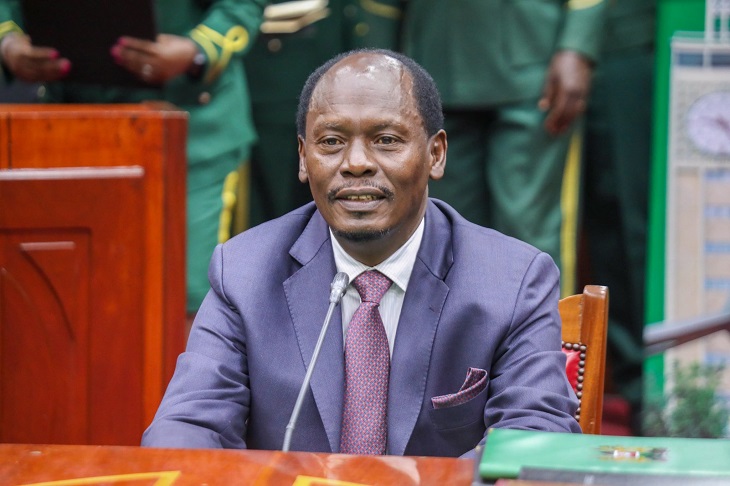ICT Cs William Kabogo has announced the official introduction of KenyaNDT, the Kenya National Digital Token. Without fanfare or public ceremony, the announcement was made through official digital communication platforms fitting for a policy rooted in the digital future.
The rollout of KenyaNDT marks a defining moment for Kenya’s financial and technological evolution. As the first national digital token of its kind in Sub-Saharan Africa, KenyaNDT is more than a digital asset; it is a strategic tool crafted to reshape how Kenyans engage with money, governance, and economic opportunity.
At its core, KenyaNDT is a blockchain-based token developed to serve as a secure, traceable, and efficient medium of value exchange. The token’s architecture is designed to integrate seamlessly with Kenya’s growing fintech ecosystem while extending financial access to millions who remain unbanked or underserved.
In his digital statement, CS Kabogo described KenyaNDT as a “citizen-first innovation” that will power inclusive finance, empower digital trade, and place Kenya among the global leaders in tech-driven governance. His words reflect a broader national ambition: to position Kenya not just as a participant in the digital revolution but as an architect of its African chapter.
The Case for a National Token
Kenya has long been recognized as a continental leader in mobile money innovation, thanks to platforms like M-Pesa. But digital payments, while revolutionary, have limitations especially for cross-platform interoperability, transparency in public sector disbursements, and access to emerging forms of digital capital such as DeFi (decentralized finance) and tokenized value.
KenyaNDT fills this gap. It is designed to be government-backed, technically open, and socially inclusive. The token will allow microtransactions across different platforms, enable real-time government transfers (such as subsidies or social programs), and offer a transparent ledger system that enhances public trust and accountability.
Unlike speculative cryptocurrencies, KenyaNDT is not being pitched as an investment asset. Instead, it is intended to operate within a regulated, utility-focused framework, serving as a public digital utility for everyday financial life from paying school fees to accessing county-level digital services.
No Event, Just Policy
The quiet nature of the rollout is not accidental. Rather than launching KenyaNDT through a high-budget event, the Ministry opted for a direct-to-digital approach. This strategy mirrors the nature of the token itself: frictionless, inclusive, and focused on real-world application rather than optics.
By announcing the initiative through official online channels, the Ministry signaled its readiness to embrace a new kind of governance, one that doesn’t rely on conventional spectacles to convey national significance. This is a policy made for digital citizens, rolled out through digital-first channels.
Adoption, Regulation, and What Comes Next
The official KenyaNDT portal www.kenyandt.com is now live, offering citizens a gateway to explore the token’s purpose, sign up for the wallet pilot, and track upcoming integrations.
Still, questions remain. The Central Bank of Kenya has yet to issue a public position on KenyaNDT’s monetary classification. Is it legal tender? Will it be pegged to the Kenyan Shilling? Will it be tradeable or restricted to domestic use? These are questions that citizens, businesses, and fintech developers are asking.
The Ministry has indicated that conversations with the CBK, the Communications Authority, and the National Treasury are ongoing to define the governance model and ensure full regulatory compliance. These frameworks will be critical not only for security and stability but also for international legitimacy and investor confidence.
Building a Token for the People
What makes KenyaNDT remarkable is not the technology , blockchain is already well known but the vision behind it. Kenya is asserting that tokens can serve public purpose. Digital finance can be built for inclusion rather than speculation. That national innovation can be driven from policy desks, not just private labs.
And perhaps most importantly, it demonstrates that Kenya’s digital economy agenda is alive and active, not confined to conference rooms or white papers, but unfolding quietly, steadily, and with unmistakable intent.
As we move deeper into the 21st century, the questions we ask must go beyond “what is blockchain” or “how do tokens work.” We must ask, what should these tools do for our people? KenyaNDT is one answer to that question, and its success will depend not just on its code but on our collective will to make it work.
Related Content: Blockchain Association Moves To Court Over Ruto’s Digital Assets Tax

